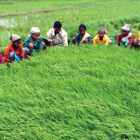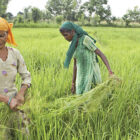The budget reveals the government intent to increase agriculture production, but unfortunately this budget will not increase farmer prosperity. A national mission on food processing being established to help in diversification of agriculture. Along with tax incentives to the private sector to provide extension services, it will be a boon for agriculture producers. By giving incentives for increasing fertiliser production capacity in India, there is hope to reduce dependence on imported fertilisers.
This budget misguides and hides more than it reveals. Direct subsidy to farmers has been announced like last year but no action has been taken yet. The wide definition of the term agriculture credit creates misconceptions about it being enhanced by ₹100,000 crore to ₹5.75 lakh crore. The increase in the budget of the agriculture ministry by 18 per cent to ₹20,000 crore is hardly extraordinary. Increased allocation for the Rashtriya Krishi Vigyan Yojna (RKVY) is impressive but, given its expanded scope, the fund allocation does not offset the increased sphere of activities. Also, that 60 per cent of India is dependent on rainfed agriculture is ignored and, therefore, not prioritised.
Funding for agriculture universities and agriculture R&D has been announced but there is no mention of removing bottlenecks to transfer of existing knowledge to the farmers. The budget can only do so much for the farmers as agriculture is a state subject. Without accompanying agricultural reforms and policy changes the budget will remain just that; numbers and disappointment.




